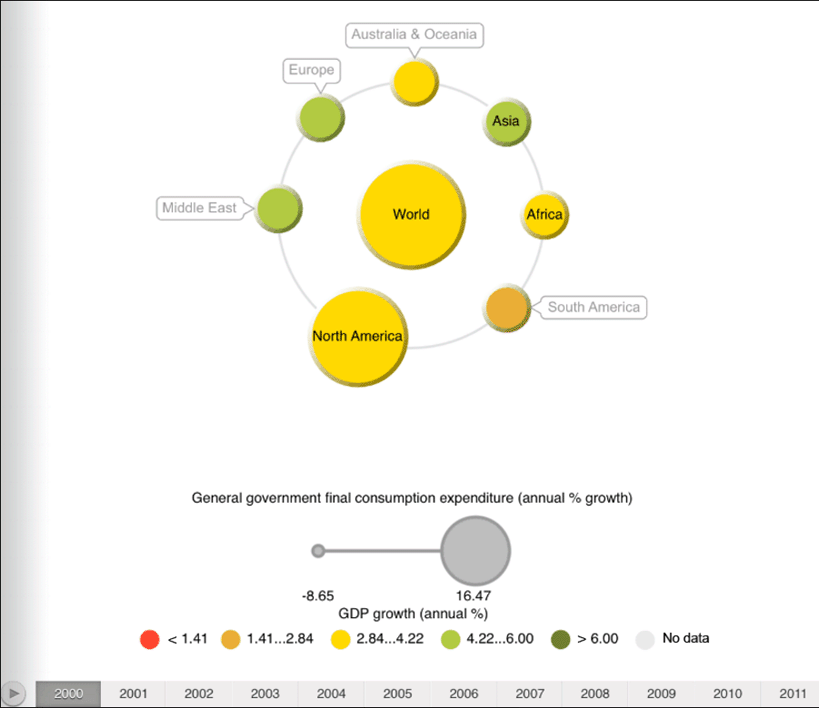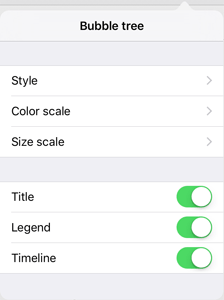
A bubble tree allows hierarchical data to be displayed as a set of interrelated bubbles. Each hierarchical branch is represented with a bubble related with bubbles that are elements of the same hierarchical level. All the elements of the same branch and the same hierarchical level form a circle, the center of which shows the parent hierarchical element. Each bubble's diameter is proportional to the value of the corresponding hierarchical element. Bubble color is also determined by hierarchy element's value.
To work with a bubble tree:
In the Analytical Queries (OLAP) tool tap the Bubble Tree button at the center of the page top panel.
In the Dashboards tool:
Tap the bubble tree title.
Go to the full-screen mode of blocks and select a block with the bubble tree.

To work with dimensions, use the Layout panel at the left page edge.
A bubble tree enables the user to display two-value sets for hierarchical data:
The first value determines bubble color.
The second value determines bubble diameter.
Bubble tree advantages:
It enables the user to find interrelation between two factors in a hierarchical data structure.
It enables the user to show relations between hierarchical elements in a visual form.
To go to the hierarchy of a bubble tree element, touch a bubble. If the selected element has child elements selected, child hierarchical level's elements will open.
To return to the upper level, touch the parent bubble to the left of the current hierarchy level.
To set up bubble tree parameters, tap the  button at the top right corner of the express report or dashboard page.
button at the top right corner of the express report or dashboard page.
After executing the operation the Bubble Tree dialog box opens:

See also: